THE BODY LINK, through the personal sensibilities and readings of contemporary artists, throws a look at the wide and universal theme of the body, physical connection that binds the human conscience to the material sphere, to sensoriality, to the awareness of the identity, to experiencing life and being in the world, within the dimension of space and time.
The exhibition suggests, with an open title, the predisposition and the interest to receive the multiple interpretative meanings offered by each of the presented artworks: video and photographic works, the latter however always related to a dynamic sequentiality or a performative action.
Artists and Artworks
Armida Gandini (1968, lives and works in Brescia, Italy) places at the center of her artistic investigation the individual and the theme of identity, sought in the relationship with the world: in many of her works an indefinite empty space, symbol of a mental field and interior theater, is the place where psychological vicissitudes are staged in various situations of confrontation with the outside and with the other. The body is read by the artist as a depiction of the personal identity which seeks self-knowledge, self-confidence, awareness and the confirmation of its own strength through the overcoming of difficulties and obstacles that life entails. In “Pregnant Silence”, video work that combines film shots with drawn and animated images, the physique of the protagonist lies immersed in a dense, heavy and aqueous environment, an actual limbo that seems to isolate her from any interaction and make any move difficult, by holding her in suspense and dragging her at times into a sort of heavy sleep or oblivion: there is no communication with existence outside, which is perceived as a confused magma. The psyche of the person is confronted in this case with a condition of immobility and closure, in which the search for clarity is a difficult process and where more than ever the relationship with the outside is reversed in the difficult situation of a necessary face to face with oneself and one’s own uncertainties and fears, inside an oppressive state of claustrophobic isolation and inertia, but, as the title suggests, full of possibilities: the artist seems to portray in a contemporary and new way the figure of “melancholy” and of the slow and difficult crossing of this introspective and spiritual passage of “black humor”, of an alchemical “nigredo”, of a “spleen”, indolence or malice of living, a territory of profound closeness of the soul with the dimension of emptiness, of lack, of the limit, of suffering, which needs to be crossed to get out of it reborn, enriched and renewed.
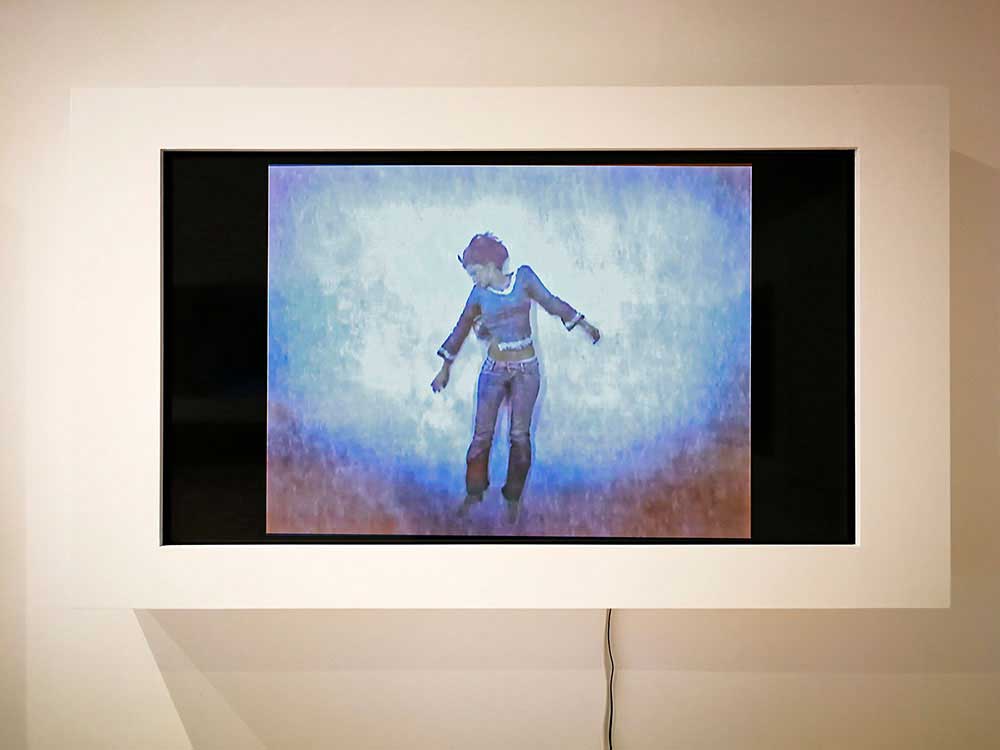
Lory Ginedumont (1964, lives and works between Italy and France) uses various means (photography, video, installation, sculpture, drawing, writing, painting, performance) to express the intimacy of her inner and emotional universe, under the ascendancy of the intense lyric vibration that characterizes all of her works: for the artist the body and its representation are closely linked to one’s personal experience, while the employed medium is chosen according to the potential of translating the message that she from time to time intends to transmit . The photographic sequence “J’ai pas envie d’etre un ange” and the homonymous video work related to it, (which is presented to the public for the first time at “The Body Link”) sees the artist as protagonist, immersed in an action in which the angelic connotation of the wings is an emblem of a psychological and spiritual condition from which she needs to strip herself from: through the words of the autograph poem from which the two works originate, it’s possible to understand the intensity of the desire to get rid of a feeling of immateriality that makes her feel inaccessible, the indefinite ubiquity proper to the celestial sphere, abstracted from the mundane, to fully live in the physical world, descending into a yearned corporeity, finally free from caging behavioral constraints. The body is in this case the personification of the material vehicle of the personality immersed in the plane of experiences and in the passage of time, which becomes a means of experimentation and knowledge, compared to the opposite psychic situation, symbolized by the angel, of ethereal purity, of keeping oneself out of existence to be everywhere, but from above, without ever really experiencing. Here is the text of the poem: “j’ai pas envie d’être un ange! plus envie d’ailes, de ciel,d’éternel. pas envie d’être invisible, inaccessible. plus envie d’être là ou là-bas, ici-bas. étrange envie de tomber des nues, sans jamais plus prendre mon envol.” (“I no longer want to be an angel, I no longer want wings, heaven, eternity, I no longer want to be invisible, inaccessible, I no longer want to be here and over here or there, strange desire to fall from the clouds without ever resuming the flight. “).
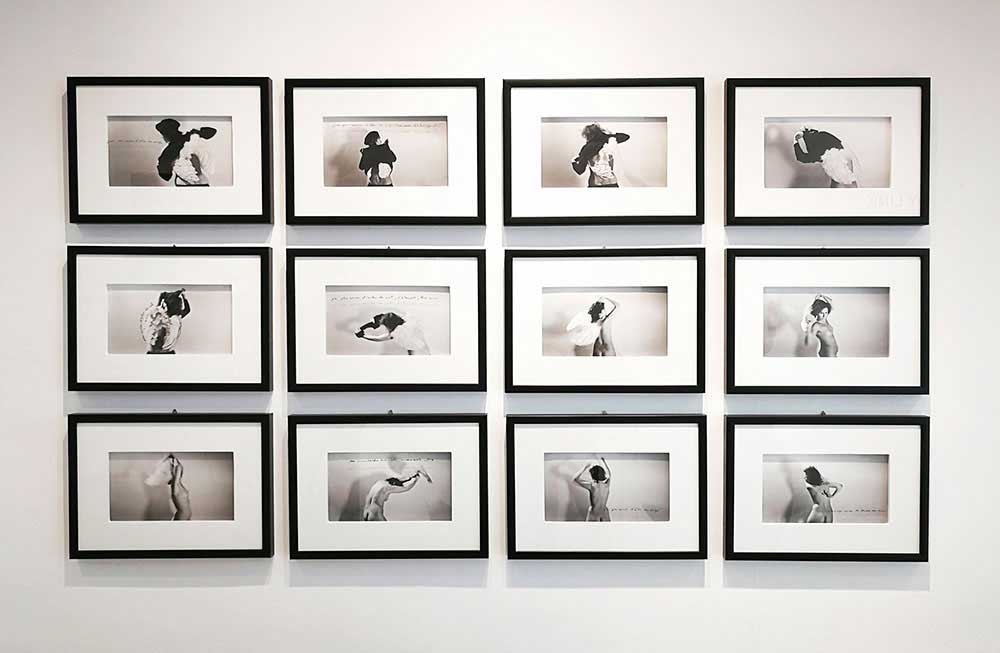
Virginia Monteverde (1969, lives and works in Genova, Italy) directs her artistic choices towards digital mediums, by experimenting their peculiar expressive potential through video art, photography, multimedia installation and digital painting: in this fluid era of globalization, media communication and rapid technological changes, the artist adapts her expressive means to the current habits of use and reading of messages, with the intention to establish a direct and deep interaction with the viewer, starting from a level of a fine- tuned structuring to then reach a subsequent emotional one. Her works, characterized by essentiality, order and rationality of classical derivation, convey reflections on the individual and collective plots of a society in upheaval and radical mutation, of which the artist wants to transmit the new liquid perceptions. In the series “CodeLife, The Artists”, the nudity of the body, the expression of the subjects, the surface of each person’s epidermis are protagonist, in a gallery of half-bust figures where the portrait tradition is renewed into a contemporary version: added to the effigy of the person, captured in a given instant of time, in the here and now of the moment of the photo shoot, is the temporal dimension of the past, of the personal experience, of the story of each of the subjects, contained within the 30 seconds of a video of which the link to access is encoded in the QRCode that everyone exposes “tattooed” on the chest, at the height of heart, as a numerical seal to decipher, able to enclose a plurality of data, in this case the same ones deposited, marked and layered on the skin of each individual, as a kind of not immediately accessible writing, traced by the passing of years and experiences. The fast flow of moments of life from childhood to the instant of the pose in front of the artist who portrays them “lays bare” the six artists and offers thirty impressions of insight almost “stolen” from the intimate memory of each; every shot in turn seems to take on the value of a new code that mysteriously then generates the following temporal fragment, as a sort of “Chinese boxes” configuration in the inscrutable unknown of the unravelling of existence. The speed of the frames in the video creates a parallel both with the extreme rapidity of information diffusion in the modern world and with the suddenness of the associations of the mind; the gaze is key and leads to the unfathomable abyss of the individual, a precious vital cipher that is transmitted to us in this “trailer” of the life of each of the protagonists.
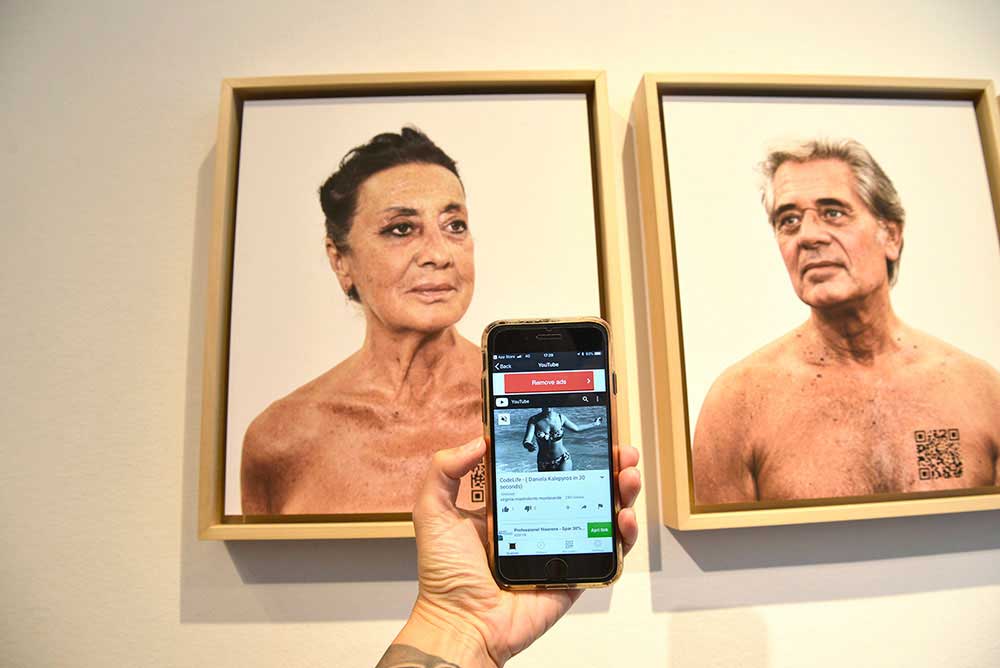
Jean Sadao (1976, lives and works in Tokyo, Japan) expresses himself through an artistic production that combines cinema, theater, performance and video art. At the center of his research there is the investigation about the identity in connection with today’s society, in which the individual must relate, face and adapt to ever faster transformations. In a globalized scenario the artist observes with particular attention the nodal point of the connection between our original natural surroundings and the current urbanized and technological ones, also read as the relationship between tradition and past, present and future, between East and West, in a perspective that in a certain way abstracts itself from the immediate, through a broad, overall vision, from above, sometimes employing surreal and symbolic images or compositions that can be read as a sort of visual alphabet. This is the case of “The Multi-sensory Impossibility of a Worm”, which will have its première at the “The Body Link”; the work raises questions about the body, the sensorial potentialities and their limits, and establishes the hypothesis of an unusual tactile and bodily language as a means of communication able to approach universality and naturalness, by questioning its possible implications in terms of influence on the person and on the community. The artist looks at physicality in the possible expansion of sensoriality and reflects on the way in which methods of communication necessarily influence the formation of the structure of the self, culture and lifestyle. The stratification of semantic levels, the perceptual displacement in decoding the sequences of the nine squares in which the artist breaks up the screen area, force the viewer to engage in an unusual mode of reading, for which he is not yet trained, in order to coordinate the multiple visual and auditory impulses, including the codes of the silent sign language and the meaning of the action of the protagonists, who seem to test each other, looking for an alternative contact and unconventional forms of interaction and knowledge.
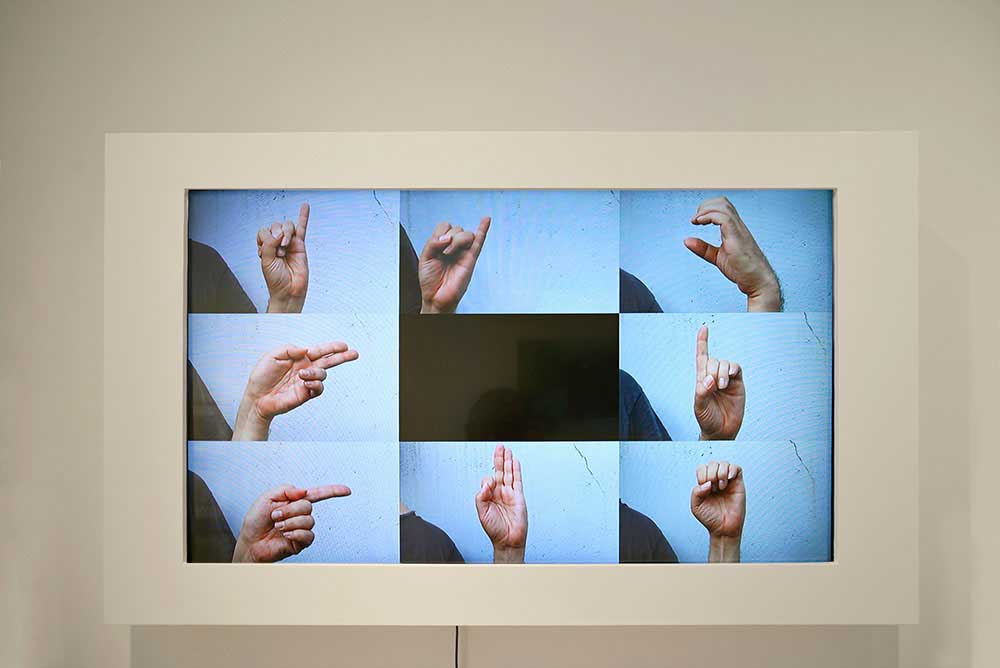
Ellen Schippers (lives and works in Amsterdam, Netherlands), uses performances, sculptural dresses, installations, video and photographic works to explore the concept of body understood as an expression of the subtle part of the person, of the interiority and of the psychic essence, whit the purpose to show their rarefied nuances and tensions, from the inside of one temporal and spatial dimension in suspense ; the artist aims, through a hypnotic and emotional involvement that’s put into effect through multiple expressive strategies, for a cathartic and decisive reaction, which can lead to the recovery of the integrity of the soul beyond the stereotypes and pre-packaged structures imposed by the pressures of society on the authenticity and uniqueness of the individual.
“The Birth of Venus” belongs to a series of triptych-works that compositionally derive from the traditional three-panel framework and incorporate photography and video into a sort of today’s tabernacle; the body is in this case the mythical and archetypical one of a divinity, numinous appearance of an entity with sensual connotations, the features called into question are the immortal and sublime ones of the Goddess Venus: the representation of her genesis from a shell, inspired by the homonymous work by Botticelli, wants to celebrate harmony, beauty and love, embodied in this case in a feminine guise. The work intends to be a living picture and is permeated by an aura of sacredness and a devotional sense in its passage from the “ritual” enacting of the birth event (by means of a theatrical action, costumes and choreography for which were designed and directed by the artist herself), to the deferred and narrative-evocative repetition of the occurrence through a video of the video: the projection of the filmed performance on the “backdrop” of a transparent plastic bust, itself a new cross-reference to the sculptural representation of the goddess, gets in turn recorded and constitutes the video loop sequence visible on the screen enclosed between the two doors; the object, ad infinitum, refers to the supernatural event.
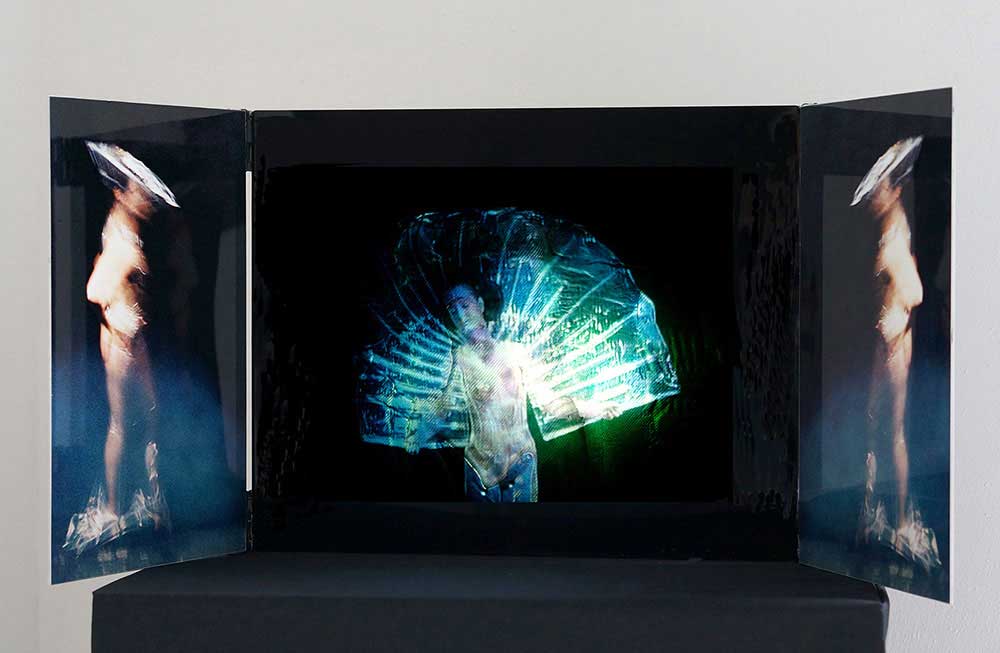
The artistic research of Sara Tirelli (1979, lives and works between Venice and Rome, Italy) moves between cinema, art, new technologies and virtual reality, mediums which are used to explore perceptive and cognitive processes, to investigate the malleability of the concept of “real”, the influence of technological means, of media and information on memory, individual and collective history and identity and on the relationship between personal imagination and the contemporary codified imaginary. The artist is interested in studying the phenomenology of the gaze, the undefined area of the gap and the links between what is perceived and what is actual, testing new levels of fruition and unconventional modes of representation and narration.
In the video work “Picnolepsy”, a character is placed in a spatial dimension that’s made ambiguous by an immersive context of anaglyphic vision and 360-degrees audio: the distorted stereoscopy, arising from the repetition of the same action and from the filming of the two shots from slightly out of sync points of view, is meant to put into practice an acute reflection on the boundary between truth and fiction, between the real, its knowledge, that’s influenced by learned, inherited mechanisms, and its continuous reconstruction and modification as a projection towards the outside world. Various visual and auditory expedients aim to involve the viewer in an uncertain sensorial circumstance, but they are also used to enlarge the setting to a wider situation (sounds which tell the presence of a second person on the scene, the two silhouettes of the actress, which sometimes separate and split, thus allowing us, through the unveiling of the the trick of film simulation, to see what would not be normally possible).
The idea of the body is analyzed here in a meaning of staged, depicted body, together with the whole potential of a recognition that’s amplified by such a representation: it is a reading that’s reversed within the body of the spectator who watches, which is investigated in turn as a sensor of subtly unsettling audio-visual strategies. The whole sequence is dotted with clues concerning the deciphering of deceptiveness, of ambiguity, of the gappiness of the understanding of the truth that can occur both through its fictional re- proposition and through the mental and cognitive dynamics themselves: starting from the title, which refers to a state of brief moments of absence of consciousness or to its invention by the subject, to then continue with the hints suggested by the spoken texts, the actions of the protagonist, the images and the objects used as symbolic traces of this puzzle.
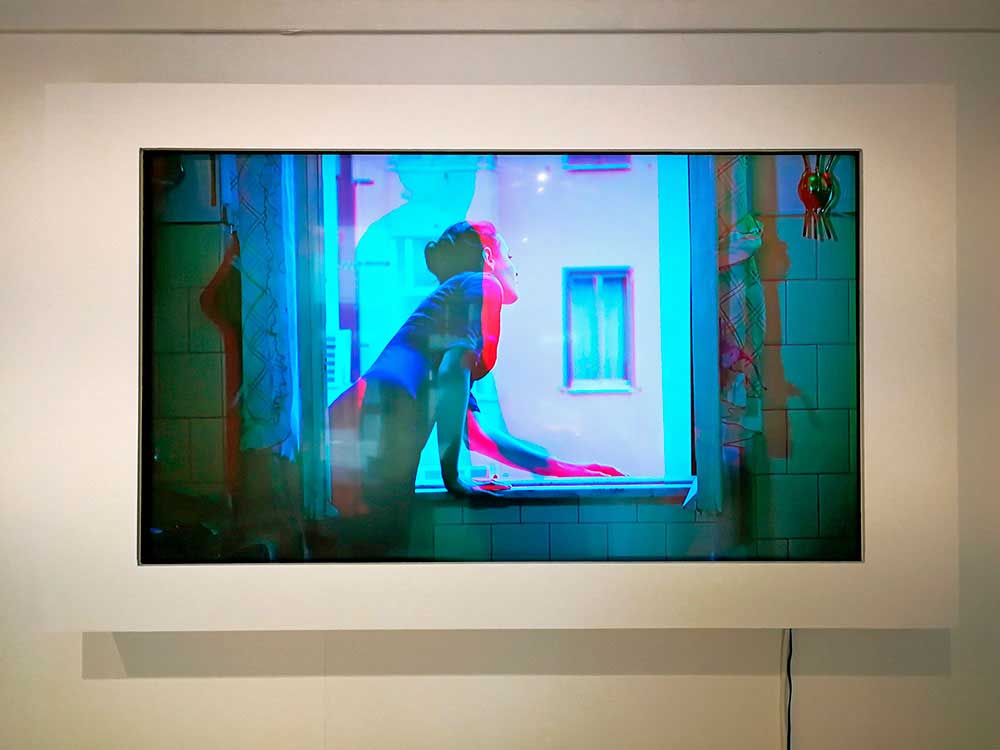
Marilena Vita (1972, lives and works between Syracuse and Milan, Italy) uses different means of expression (painting, installation, photography, video art, performance) with the aim of bringing into the existence in the real world universes and conditions that she encountered in the private sphere of the soul, in the intimacy of the psyche, thereby allowing herself and the spectators to be confronted with experiences and contexts belonging to a universal imagery and emotional sphere. The bodily dimension in all of her works is experienced in first person, in staging performative actions which are executed always only once and never repeated, or in entering into situations where she herself acts as the subject of photographic self-portraits; in the video work “Non essendo è (“In not being it is”) the body is represented through its negative, the total black of a shadow that does not have the value of the dark side of the unconscious, but is connected to light, to the primordial energy source of every form of life in the universe. It is a fertile black, a vital, creative one, sparkle of awareness that from the fruitful “nothing” vibrates a first beat, to start a journey in the direction of self-knowledge, to experience the infinity of the facets of the self, which spring from a unique matrix. The dark presences, whose various personalities and dispositions of mind can be guessed from their various silhouettes, cadences of gestures and attitudes, move, without meeting, in a single scenario, motionless location that seems to exist from an indefinable time, linked to absorbed memories from every experience that has been lived there, a place that refers to the idea of impermanence and simultaneously to an a-temporal situation. The denial of the presence becomes a more powerful and communicative form than a representation of it and is the messenger of the original absolute in search of its identity: it is the impossible glance towards oneself that only a mirror or the eye of others can give us back, it is the multiple alterity of the infinite possibilities of being, the plurality of uniqueness, which contains everything. [Texts: Sonia Arata | Director of Red Stamp Art Gallery]
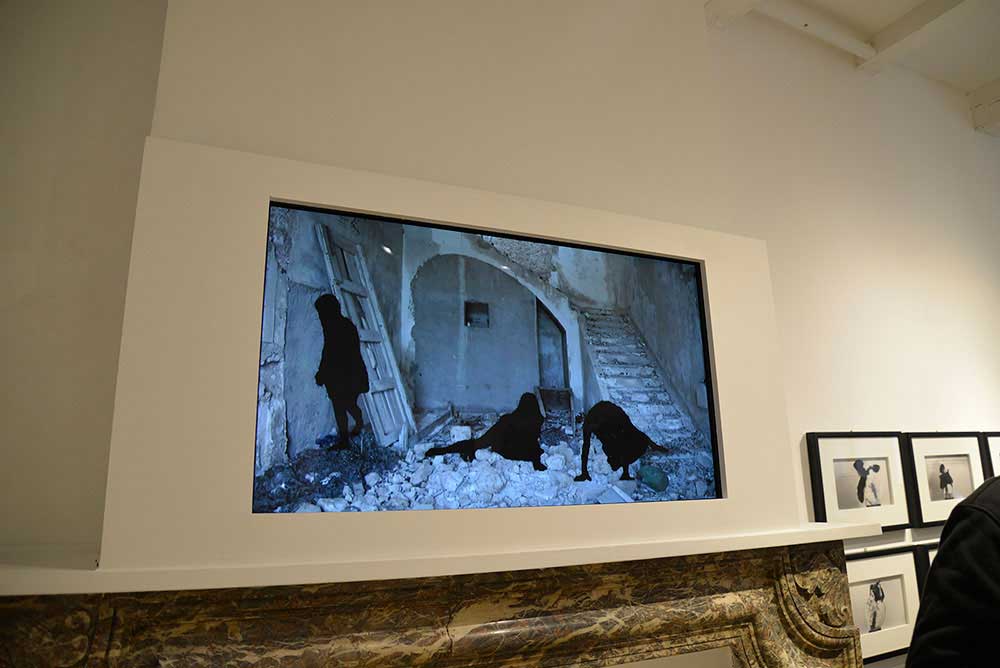
Red Stamp Art Gallery
19 May – 16 June 2018
Rusland 22 / 1012 CL Amsterdam NL






